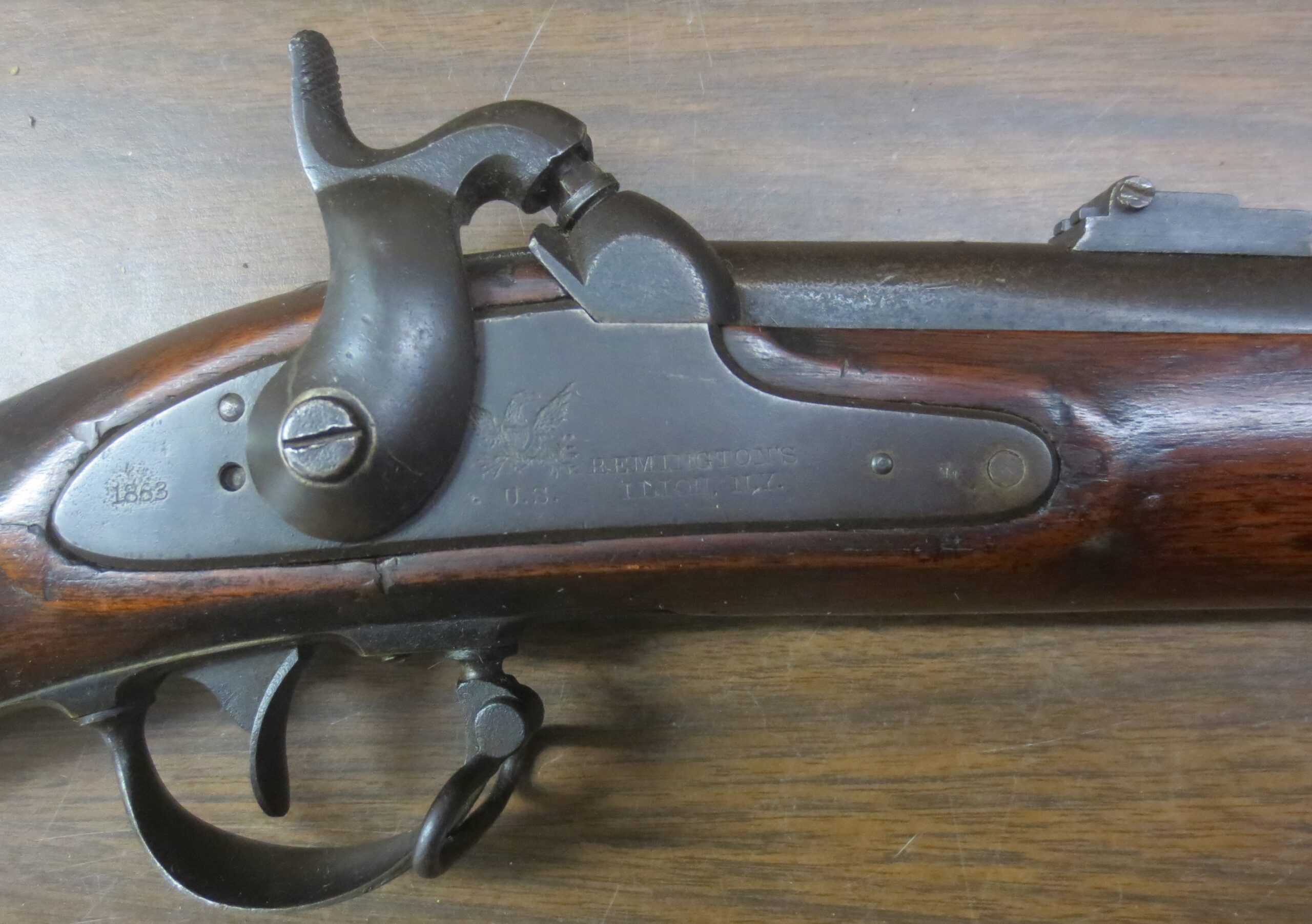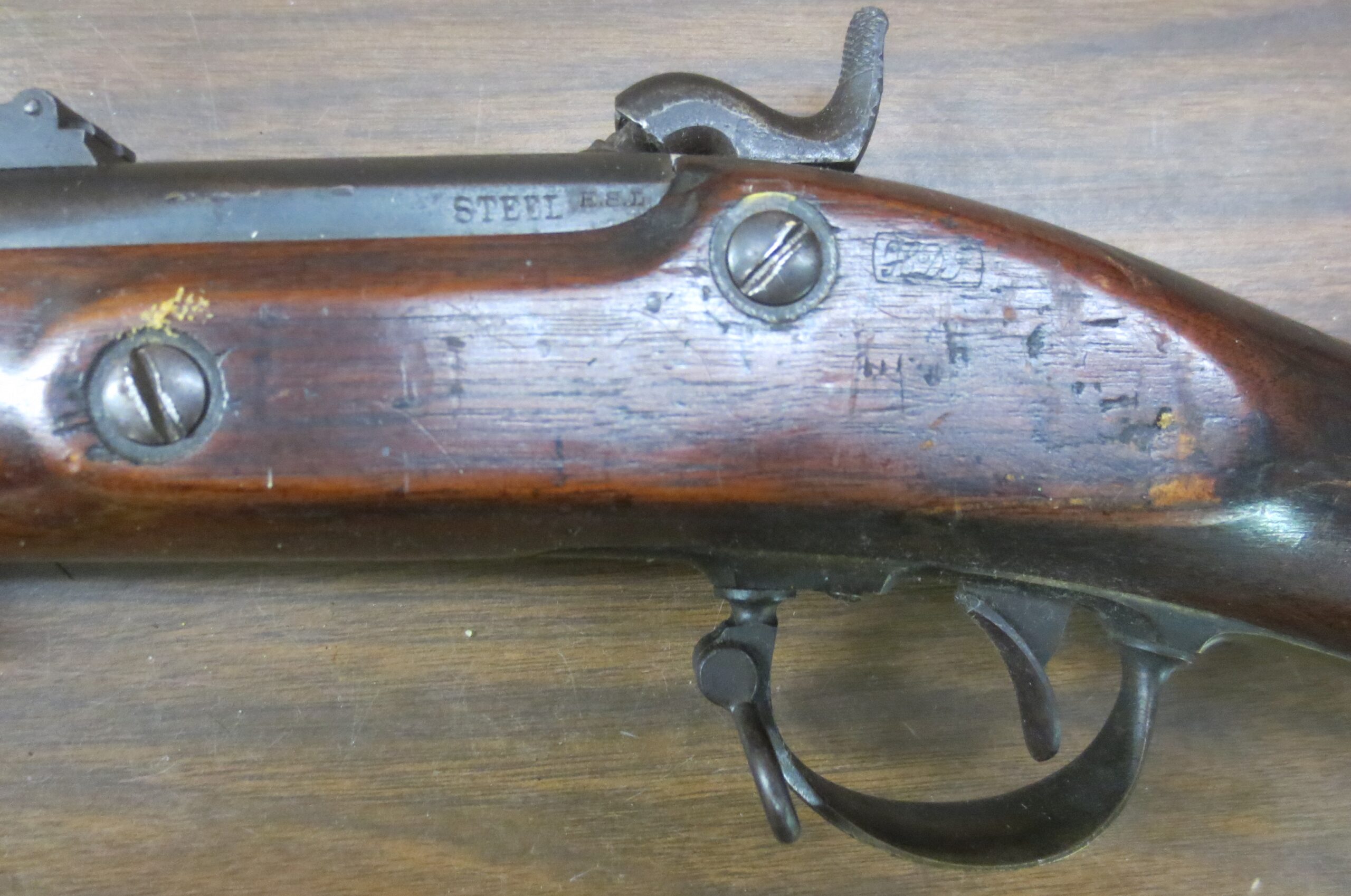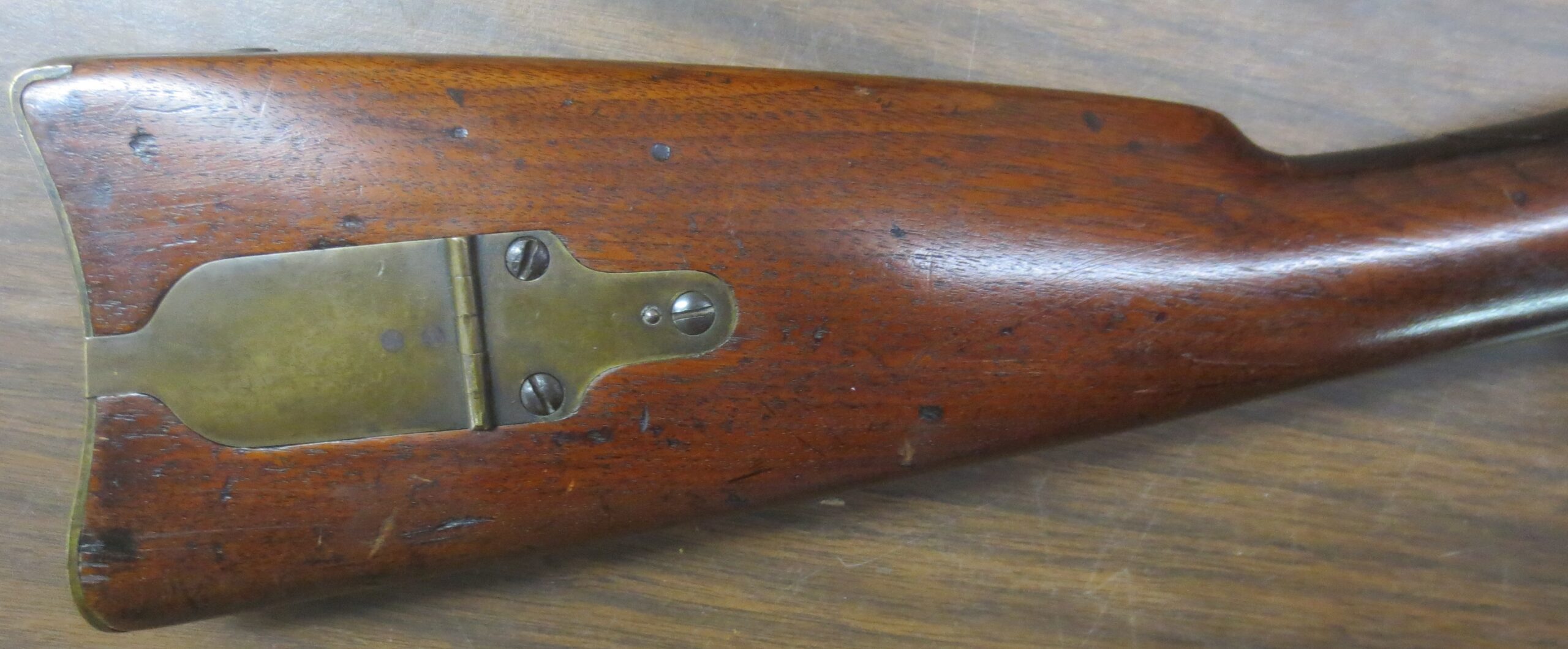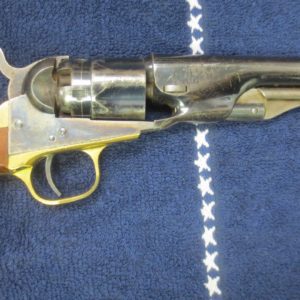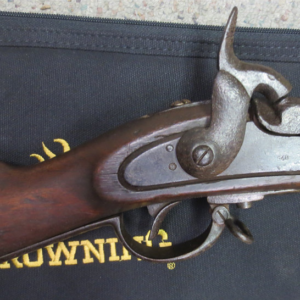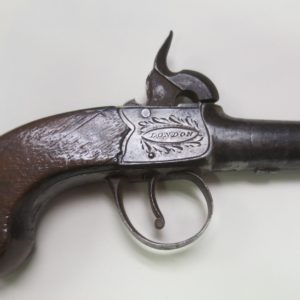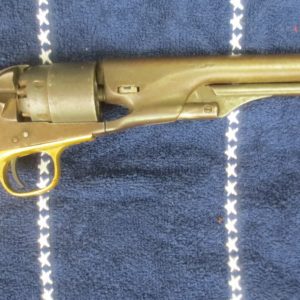Description
Also known as the “Zouave Rifle,” the.58-caliber muzzle loading 1863 dated Remington rifle was referred to as “Harpers Ferry Pattern” in official Army documents. Although over 10,000 were manufactured, exactly who used them and how they acquired the name Zouave are mysteries.
This particular example recently surfaced at an estate sale in Virginia. It retains 75%+ original blue on the barrel and is in very good to fine overall condition other than for an old age crack repair at the wrist (as shown in images). It has a wonderful untouched patina overall and mechanically functions perfectly. The original matching sword bayonet is included.
While collectors have long referred to the Remington Zouave Rifle as the US Model 1863, recent information published by arms researcher and author George Moller indicates that the correct terminology is the Model 1862 Rifle. These 33” barreled percussion rifles are among the most attractive and best built of all the Civil War era US military long arms. In July of 1861, the US government contracted with the Remington Arms Company of Ilion, NY to produce 10,000 rifles of the Harper’s Ferry pattern complete with brass handled saber bayonets for $20.00 each. The term Harper’s Ferry pattern during the period referred to either the Harper’s Ferry long-range altered Mississippi Rifles or the US Model 1855 rifle that had been in production at the rifle works in Harper’s Ferry prior to the burning of the armory and its subsequent capture by the Confederacy. In reality, the rifle was a simplified and improved version of the US M1855 rifle. It eliminated the Maynard mechanical tape priming system and included older M1841 features like brass furniture and seven-groove rifling on some of the rifles, while others were rifled with the standard US three-groove rifling system. It is unknown where the nickname Zouave originated, but the term has been used for a very long time to describe these rifles, even though few of the guns are documented as ever seeing service with any Zouave regiment or any other Federal regiment (other than a few state troops, like New Jersey) during the American Civil War. The term found its origins in the catalogs of Francis Bannerman & Company who were selling the guns as surplus during the 20th century.
Due to manufacturing delays, probably due to the tooling up process at the factory, Remington did not actually deliver any arms until April of 1863. While testifying before the Holt-Owens Commission in April of 1862, Remington requested that the contract be enlarged to 40,000 or 50,000 rifles and offered to reduce the per unit price from $20 to $17, complete with bayonet. The Ordnance Department agreed to a new contract for an additional 10,000 rifles in August of 1862, but it appears that this contract simply replaced the contract from 1861. Additional manufacturing delays prevented the last 2,500 rifles from the contract from being delivered before the contract expired. In order to receive these rifles, the Ordnance Department authorized a new contract in December of 1863 for 2,500 rifles. This allowed the guns to be delivered but has led to the misconception that Remington actually produced 12,500 rifles, when in fact they only delivered 10,001 between April of 1863 and January of 1864. All of the rifles were delivered to the Watervliet Arsenal in New York, but none were ever issued to Federal units during the course of the war. Virtually all of the rifles were sold to Francis Bannerman & Company on August 8, 1907 for $0.54 each, having never seen any military service, and essentially becoming a footnote in Civil War military arms history. It is interesting that when the Centennial of the American Civil War brought Civil War re-enacting to a large number of new participants, it was the Remington “Zouave” that was chosen as the representative Civil War long arm to have reproduced for the new living historians. A truly ironic choice for those involved in a hobby that would be plagued with historical pitfalls and misconceptions from its very beginnings!
